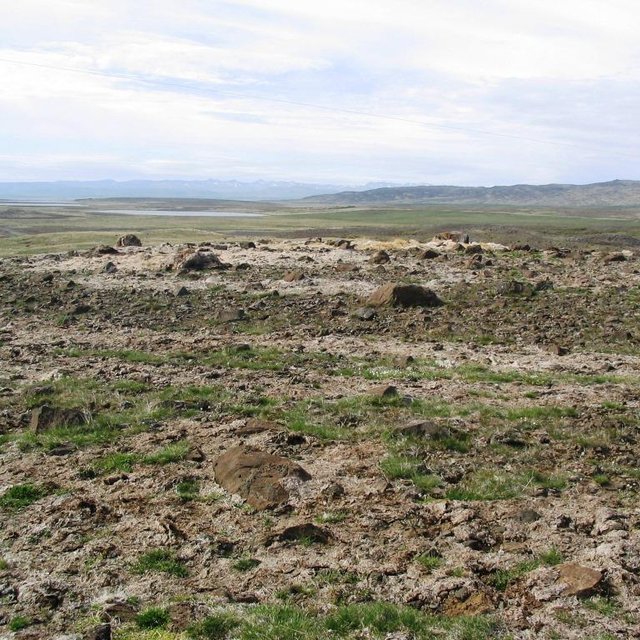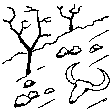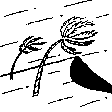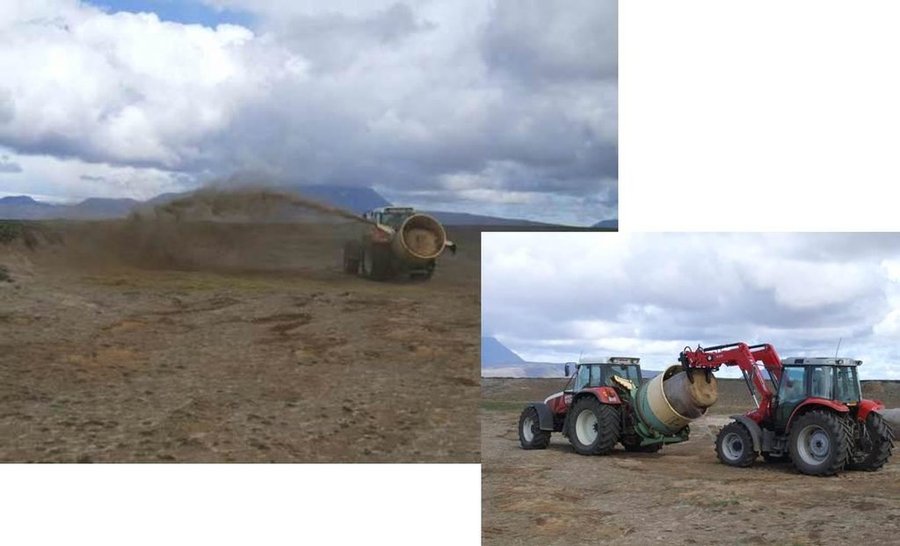



The rangelands in question are severely degraded, and parts of them have lost their topsoil layer entirely. Nevertheless, in many cases some remnant vegetation patches are still in place and can serve as seed banks during the restoration process. In order to stabilize the surface (i.e. to reduce the effects of freeze-thaw processes), to provide nutrients to the system, increase water availability and facilitate the spread of native species within the degraded areas, tractors are used to spread manure or hay over the denuded areas. All implementation is based on the methods and tools used in ecological restoration, aiming at re-activating environmental and ecological processes, and increasing the resilience of the ecosystems undergoing restoration. Denuded patches, preferably close to the remaining vegetation "islands", are covered with organic matter in order to stabilize the surface, facilitate seed production and dispersal and provide safe sites for germination.
Purpose of the Technology: The purpose of the technology is to halt further land degradation and facilitate natural succession within the area undergoing restoration. In the long-term, it should substantially reduce wind and water erosion. It should also lead to increased biodiversity, enhanced water availability and accelerated carbon sequestration (in both soil and vegetation). The overall restoration task is to increase the resilience of the ecosystems to natural hazards, including volcanic activity.
Establishment / maintenance activities and inputs: In the year after the areas are addressed, they are commonly treated with a low level of inorganic fertilizer to provide readily available nutrients to the seeds, and seedlings that have already germinated, within the area. The fertilizer treatment is repeated twice a year for 4-8 years on average.
Natural / human environment: In the long-term, the technology is expected to substantially increase biomass production, re-build soil qualities, accelerate carbon sequestration and secure water availability within the rangeland and the adjacent ecosystems. The areas still grazed are assumed to be more suitable for grazing and the protected areas are expected to be of better recreational and aesthetic value. The increased vegetation cover will reduce, and even halt, the sand drift that still creates challenges for inhabitants in adjacent villages, on farmsteads and within the summerhouse clusters scattered around the area. As the degraded rangeland is in the vicinity of an active volcano (Mt Hekla) the technology is also expected to increase ecosystem resilience against natural hazards like ash and pumice drift and reduce potential offsite damage caused by these materials.
Location: Rangarvellir, Rangarthig Ytra, Iceland
No. of Technology sites analysed:
Spread of the Technology:
In a permanently protected area?: No
Date of implementation: more than 50 years ago (traditional)
Type of introduction








| Specify input | Unit | Quantity | Costs per Unit (ISK) | Total costs per input (ISK) | % of costs borne by land users |
| Labour | |||||
| drivers on the tractor | ha | 1.0 | 126400.0 | 126400.0 | |
| Equipment | |||||
| Machine use (2 tractors needed) | ha | 1.0 | 72000.0 | 72000.0 | 100.0 |
| Fertilizers and biocides | |||||
| Compost/manure (hay cost probably higher) | ha | 1.0 | 10000.0 | 10000.0 | |
| Other | |||||
| transport of the hay (depend how far away) | ha | 1.0 | 10000.0 | 10000.0 | |
| Total costs for establishment of the Technology | 218'400.0 | ||||
| Total costs for establishment of the Technology in USD | 1'582.61 | ||||
reduce dust in the air --> air better for breathing